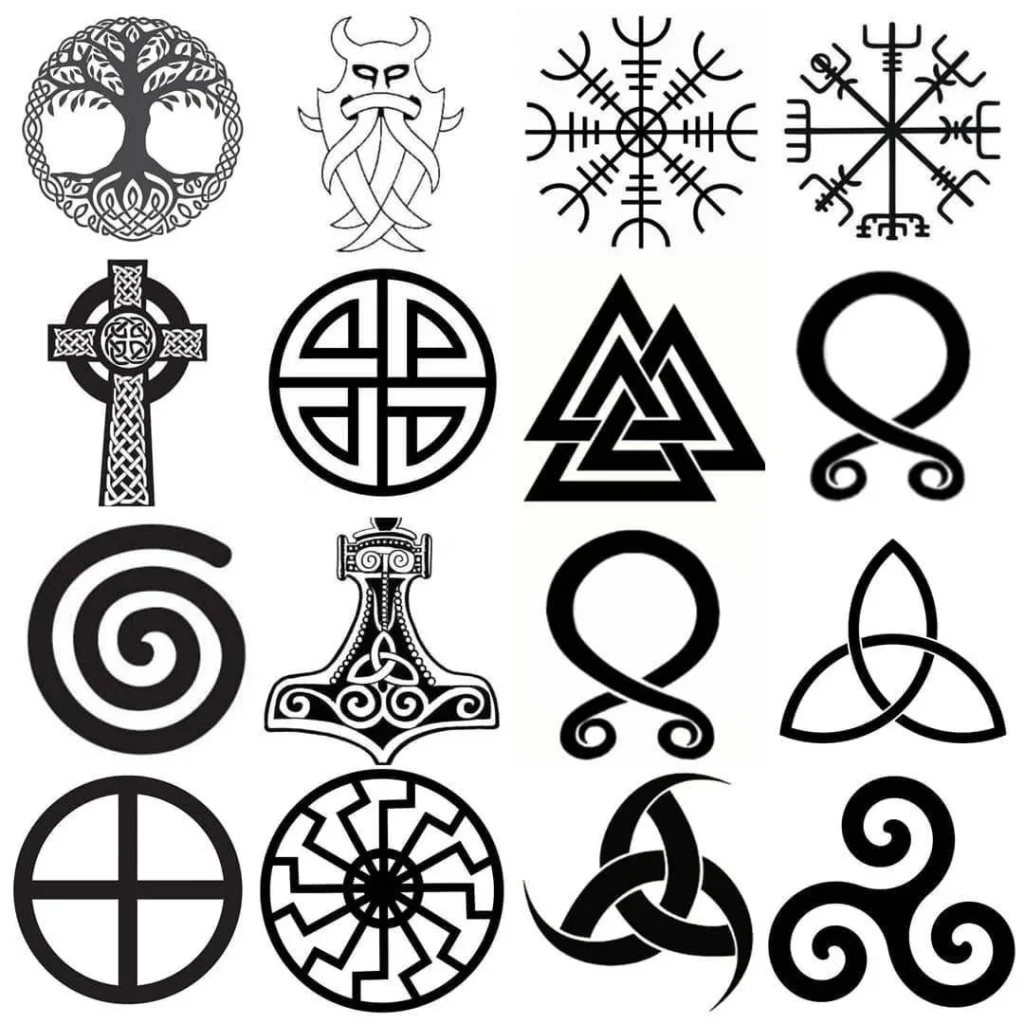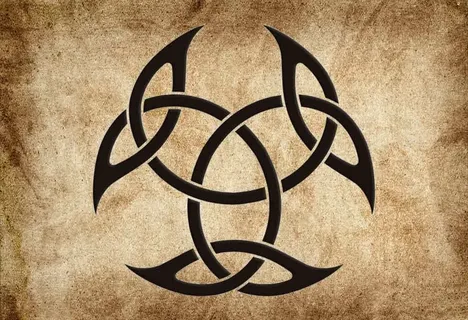Understanding the Symbol’s Historical Origins
Tracing the roots of any symbol is much like navigating through a labyrinth of time and culture. The task demands a layered approach, unearthing hidden connections along the way that tie civilizations together through shared symbolism. The origins of any symbol can often be traced back to the time when early humans began to communicate using symbols, a practice that was less about language and more about conjuring up deep-seated existential ideas.
The value of understanding a symbol’s historical origins is immense. Indeed, it offers a mesmerizing glimpse into our collective ancestral mindset and provides context for our current usage. While some symbols may have retained their original meanings, others could have evolved spectacularly over time, colored by sociopolitical and religious influences. This intrinsic connection between symbols and history paints a vivid picture of human evolution, underlining the continuity of our shared heritage.
Exploring Ancient Celtic Symbols
The historical roots of most ancient symbols often lead us back to the Celts, a group that held a profound appreciation for the natural and spiritual world. This veneration was embodied in their intricate and meaningful symbolism. The Celts were a collective of tribes spread across what’s now known as Western Europe, with the most concentrated regions in Ireland and Britain. Each symbol, whether inscribed on monoliths, depicted in their intriguing metal works, or embroidered onto their war banners, encoded a unique aspect of their culture, belief system, or philosophy.
Unravelling the symbolism of ancient Celtic Symbols icons, we find a complex interweaving of mythology, spirituality, and an acute observation of the natural world. The Triskele, or the three-legged symbol, for instance, represents the three realms— land, sea, and sky, or the Triple Goddess symbolising maiden, mother, and crone. The Celtic cross, with its distinct circle enveloping the intersection of the cross, demonstrates a unique amalgamation of the Christian cross with the symbol of the sun, reflecting a symbiosis between the old and new beliefs. Indeed, each symbol tells a story of the Celtic people; their struggles, aspirations, and their deep-rooted connection with the mystic world.


Interpreting the Christian Perspective
The contemporary Christian understanding of the symbol is steeped in rich biblical tradition and theological discourse. While the symbol’s historical origins precede Christianity, its incorporation into Christian iconography has presented it as a conduit to interpret and communicate complex theological principles. It is often viewed as a representation of the Holy Trinity – the Father, the Son, and the Holy Spirit. In this context, the interconnectedness of the symbol’s elements represents the unified yet distinct nature of the divine trinity.
However, it’s essential to recognize that not all Christian denominations assign the same interpretation to the symbol. For some, it stands as an embodiment of faith, hope, and charity – the theological virtues articulated in the New Testament of the Bible. As such, the symbol has seen a versatile application in Christian arts, rituals, and religious paraphernalia. Despite its diverse interpretations, the emblem remains a powerful tool for conveying Christian spiritual beliefs and concepts.
Celtic Symbols and Their Connection with Norse Mythology
While scouring through the annals of Norse mythology, one can uncover a multitude of symbols, each with its own deep-rooted symbology. One such emblem is commonly found represented in myths that highlight the interconnectedness of all things in creation and the recurring cycles of life, death, and rebirth – conveying a profound grasp of the universe’s very fabric.
In Norse mythology, symbols often offer insight into the Norse civilization’s ethos and their rich mythological world, where gods, humans, and mythical creatures interacted. As the mythology suggests, the universe was perceived as an intricate web of overlapping cycles and interconnected parts, akin to the vision conveyed by these recurrent symbols. As a result, the symbolism found in Norse mythology remains relevant and evocative, carrying layers of meaning that resonate within and beyond its original cultural context.
Exploring the Pagan Interpretation
Pagan interpretations are quite distinct when it comes to symbol assessment, as they have a unique perception of the world and spirituality. Hinged on nature worship and polytheism, Paganism imbibes an array of symbols, each encompassing a multitude of meanings that often overlap with other cultures and religions. This intrinsic variety and diversity make a comprehensive interpretation of pagan symbols a stimulating venture.
In the realm of Pagan symbolism, connections to tangible elements such as earth, wind, fire, and water are common, linking it closely to an appreciation for the environment. Often the symbolism embodies things like fertility, harvest, or the changing of the seasons. Assumingly straightforward, a deep dive into the realm of Pagan symbolic interpretation exposes an intricate and profound system of philosophy enriched by thousands of years of human thought and contemplation.
Symbolic Use in Wicca and Witchcraft
As a belief system rooted in tradition yet often adapted to the individual, Wicca and witchcraft tend to be malleable in their use of symbols. These symbols, many drawn from ancient sources and recontextualized, serve to communicate complex ideas and harness specific energies in practice. For Wiccans and witches, the symbol is understood as more than just a representative image; it is considered a powerful tool for manifestation and change. This view aligns with many other spiritual and occult beliefs that attribute tangible power to intangible symbols.
Elements, animals, planets, and various geometric configurations are among the many symbols utilized in Wiccan and witchcraft rituals. These symbols are used in casting circles, invoking deities, spell-crafting, and establishing a sacred space. Each symbol has a specific meaning or energy associated with it, and the intention behind its use is just as important as the symbol itself. This ritual creation and use of symbols is a key component of Wiccan and witchcraft practice, emphasizing the interconnectedness of all things and the power of intention.
The Symbol in Popular Culture and Media
In the modern era, symbols have proven to be a powerful tool in popular culture and media. They have infiltrated every aspect of society, from our daily interactions, to the movies we watch, even the books we read. They carry with them a sense of profundity and depth, speaking to audiences in a language that transcends words. This ability to tell complex narratives and symbolize sophisticated concepts makes them instrumental in the world of film, literature, and art.
Symbols are not only critical in storytelling but also branding. A simple emblem can tell a lot about a brand’s belief and ethos, making it easily identifiable amidst a sea of competitors. This precise deployment of symbols is prevalent in advertising, where companies have successfully harnessed their power to evoke emotions, often persuading consumers into making purchasing decisions. They evoke deep-rooted associations and memories, making them an effective and compelling medium in popular culture and media.
The Use in Modern Occult Practices
The modern application of ancient symbols in occult practices presents a resurgence of old beliefs, creating a link between the past and the present. The emphasis on intuition, connection with the spiritual realm, and divination is reinforced through the use of these symbols. They often occupy a prominent place in ritualistic practices and are seen as key conduits in navigating the spiritual planes, for instance, in Neo-Pagan witchcraft and certain esoteric societies.
The understanding and interpretation of these symbols have expanded due to the internet and globalization, which has facilitated the cross-pollination of ideas and practices. The symbols have also been appropriated in various contexts, occasionally taking on new dimensions that might significantly deviate from their ancient origins and interpretations. Whether these changes represent a true evolution of symbology or a distortion from its original meanings is a debate among practitioners and scholars.


Pingback: The Celtic Symbolism: Its Meaning and Occult Si...